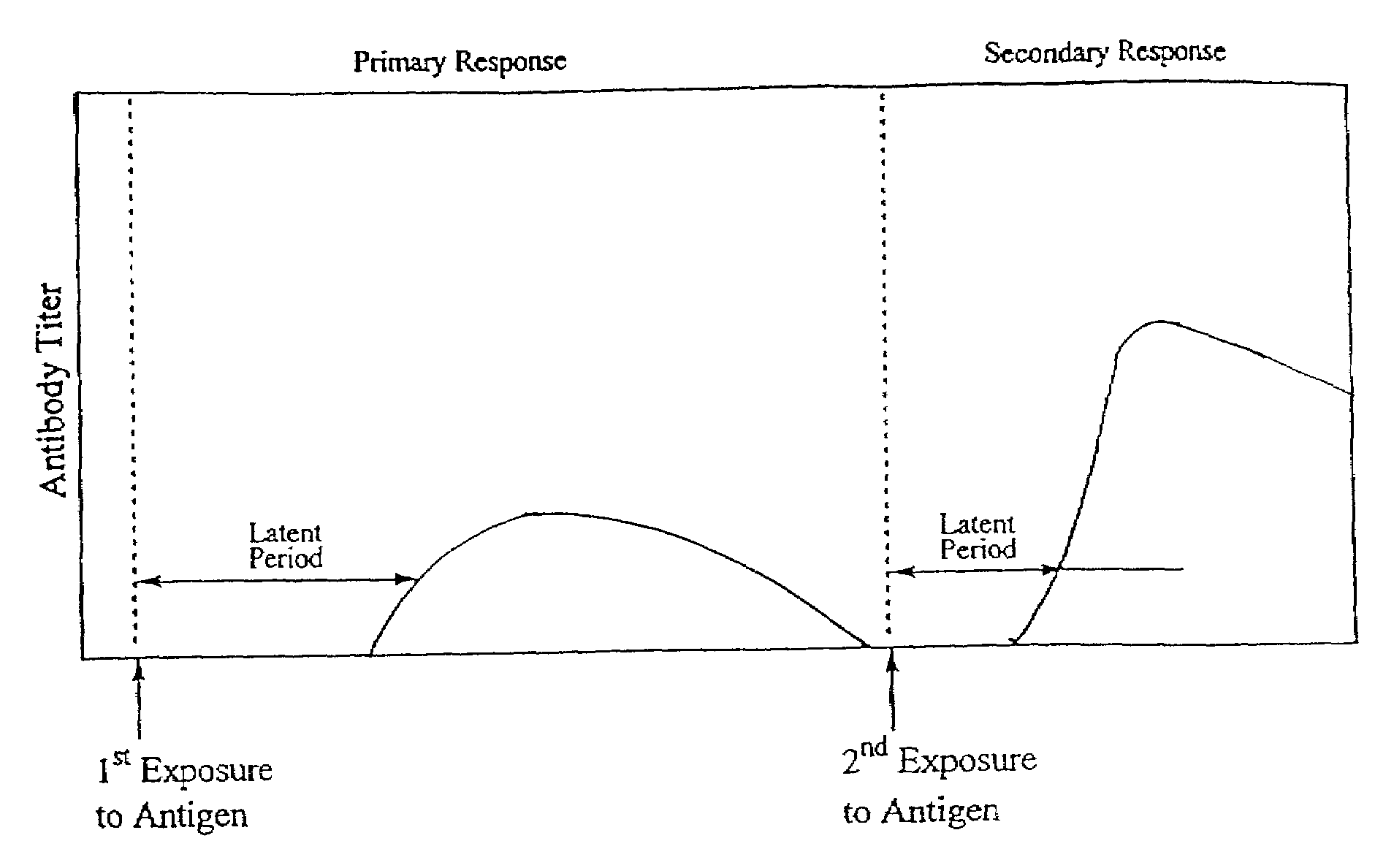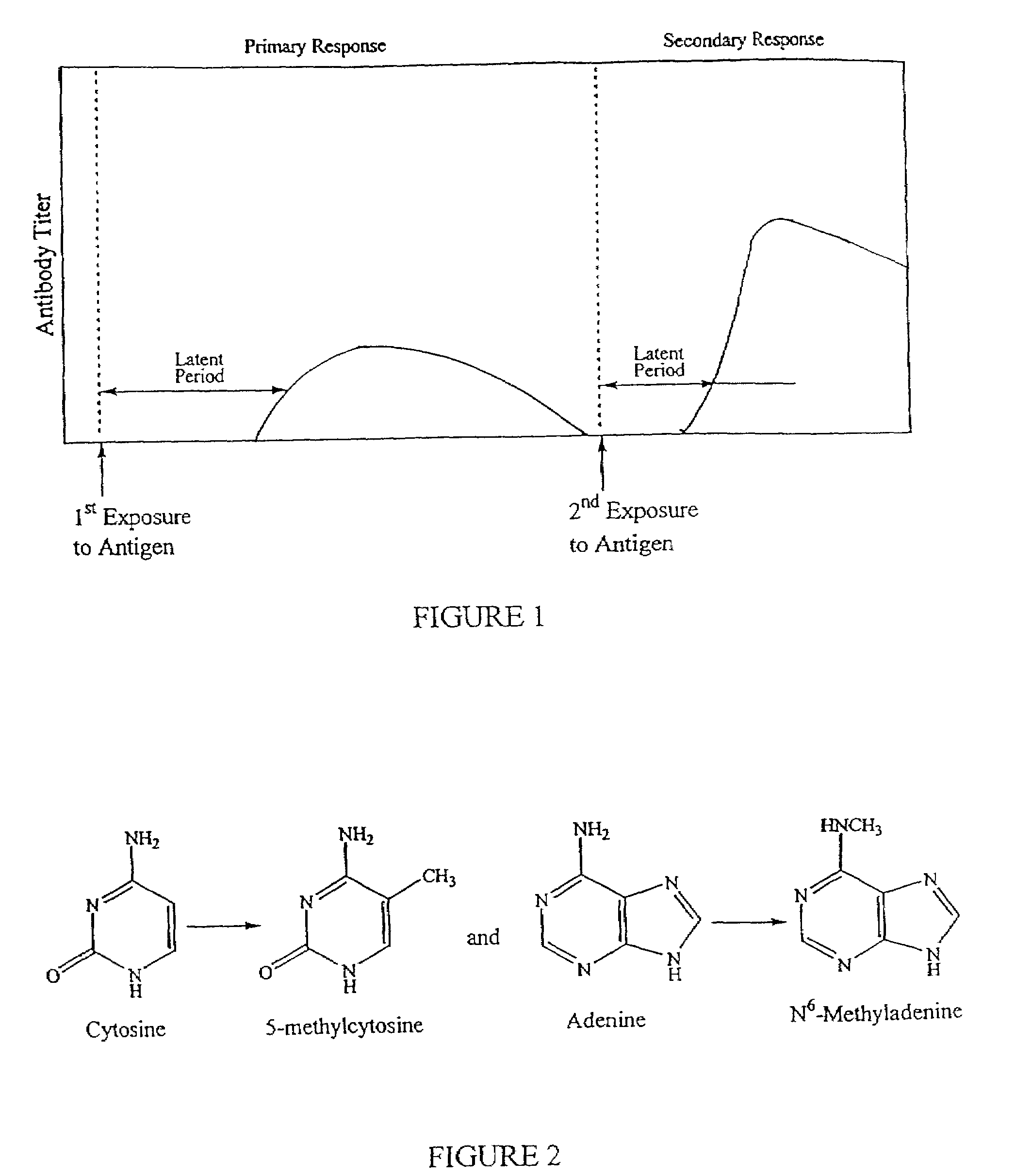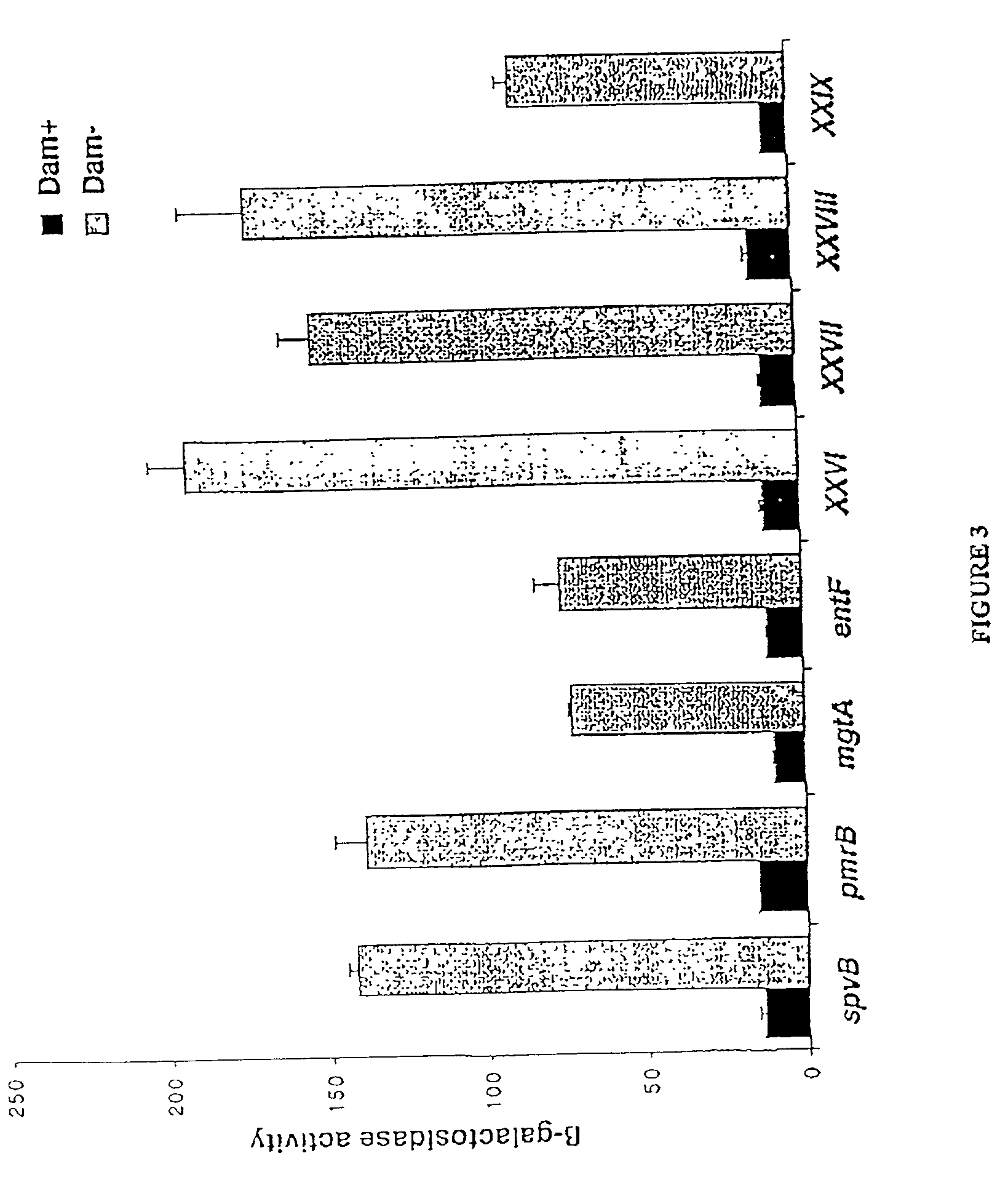Method of reducing bacterial proliferation
a technology of bacterial proliferation and antibacterial activity, applied in the field of creating antibodies, can solve the problems of food-borne diseases that pose a serious threat to our health, the safety of the nation's food supply, and the agricultural industry, and achieve the effect of broad antimicrobial action and protective immune respons
- Summary
- Abstract
- Description
- Claims
- Application Information
AI Technical Summary
Benefits of technology
Problems solved by technology
Method used
Image
Examples
example 1
Dam Salmonella Derivatives are Avirulent
Strain Construction
[0239]All Salmonella typhimurium strains used were isogenic with American Tissue Culture Collection (ATCC) strain 14028, a smooth virulent strain of S. typhimurium referred to as “wild type”. Previously, all reported Dam mutations from other laboratories used Salmonella strain LT2 which is at least 1000-fold less virulent than the wild type when delivered i.p. See the data in Table 1.
[0240]All restriction enzymes and pBR322 were, and can be, purchased from commercial sources, such as Stratagene, 11099 North Torrey Pines Rd., La Jolla, Calif. 92037. Electroporation was carried out with a BioRad Gene Pulser apparatus Model No. 1652098. S. typhimurium cells were prepared as per the manufacturer's instructions. Aliquots of competent cells were mixed with an aliquot of the desired plasmid and placed on ice for 1 minute. The mixture was transferred into a cuvette-electrode (0.2 cm) and pulsed once at a field strength of 2.5 KV / cm ...
example 2a
Protective Efficacy of Dam− Salmonella Attenuated Strains
[0257]Strains which demonstrated attenuation as a result of intraperitoneal or oral challenge of BALB / c mice were further tested for protective immunity against subsequent challenge by the wild-type strain at 105 L.P. or 109 orally. BALB / c mice were perorally immunized via gastrointubation with a dose of 10+9 Dam− S. typhimurium. Five weeks later, the immunized mice were challenged perorally with 10+9 wild-type S. typhimurium as described. After five weeks, surviving mice were challenged with the wild-type 14028 strain as noted in Table 2 below. Survival for four weeks post challenge was deemed full protection. These data demonstrate the potential use of the present invention in developing vaccine strains.
[0258]Since Dam− mutants were highly attenuated, it was determined whether Dam− Salmonella could serve as a live attenuated vaccine. Table 2 shows that all (17 / 17) mice immunized with a S. typhimurium Dam− insertion strain su...
example 2b
Protective Efficacy of Killed Dam Derivatives
[0262]Determination of whether living Dam− or Dam overproducing bacteria are required to elicit a fully protective response. The ectopic expression of multiple proteins in Dam− vaccines (see above and below) suggests the possibility that killed Dam− organisms may elicit significantly stronger protective immune responses than killed Dam+ organisms and thus be used as mucosal vaccine. In vitro grown S. typhimurium Dam− bacteria are killed by exposure to sodium azide (0.02%) and / or UV light, after which the antimicrobial is either washed or dialyzed away from the killed organisms. The efficacy of the whole cell killed vaccine preparation is tested with and without the use of mucosal adjuvants such as cholera toxin, E. coli labile toxin, or vitamin D3 (1,25(OH)2D3). Accordingly, vaccine preparations containing 1010 killed Dam− Salmonella, alone and in combination with mucosal adjuvants, are used to orally immunize BALB / c mice (as described in...
PUM
| Property | Measurement | Unit |
|---|---|---|
| pH | aaaaa | aaaaa |
| acid | aaaaa | aaaaa |
| nucleic acid sequence | aaaaa | aaaaa |
Abstract
Description
Claims
Application Information
 Login to View More
Login to View More - R&D
- Intellectual Property
- Life Sciences
- Materials
- Tech Scout
- Unparalleled Data Quality
- Higher Quality Content
- 60% Fewer Hallucinations
Browse by: Latest US Patents, China's latest patents, Technical Efficacy Thesaurus, Application Domain, Technology Topic, Popular Technical Reports.
© 2025 PatSnap. All rights reserved.Legal|Privacy policy|Modern Slavery Act Transparency Statement|Sitemap|About US| Contact US: help@patsnap.com



